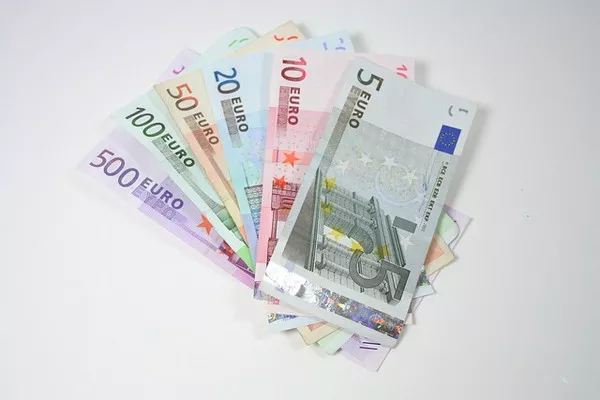In an interview with the Economic Club of Washington DC, Fed Chairman Jerome Powell would not commit to any timing for the Fed’s first rate cut. His move effectively avoids the tail risk of a surprise move at the next FOMC meeting on July 31. “As inflation recedes and the labor market cools, it’s time to look at those two tasks (price stability and maximum employment),” Powell said. “The balance between the two tasks is better.” A labor market that is no longer overheated Unexpected weakness may be a reason for the Federal Reserve to trigger an interest rate cut.
The Fed chairman also mentioned the benign CPI data released last week: “We did not gain more confidence in the first quarter (that inflation is continuing to move towards the 2% target), but the three data in the second quarter did “Economic data released this month have triggered a major correction in U.S. currency markets. The possibility of a quarter-point rate cut in September is fully priced in, with some beginning to consider the possibility that the Fed will start cutting rates from a larger 50 basis points. A cumulative 75 basis points of rate cuts by the end of the year are all but priced in, with the Fed’s forward guidance in June calling for just one 25 basis point cut. The combination of market positioning and Powell’s balanced remarks leaves little room for further downside at the front end of the U.S. bond yield curve.
U.S. 2-year and 3-year yields were almost flat. The long end of the U.S. yield curve underperformed, with 10-year and 30-year yields rising 4.7 basis points and 6.2 basis points respectively. The U.S. 2/30-year yield spread is now flat after nearly two years of near-constant inversion. We believe that US politics is the cause of this curve change. US presidential candidate Donald Trump survived an assassination attempt at a rally over the weekend, boosting his approval ratings. His decision to nominate J.D. Vance as his vice presidential running mate signals that Trump is optimistic about the outcome of the November race. He is doubling down on his MAGA agenda, hinting at more protectionism (especially against China) and promising tax cuts.
EURUSD is approaching resistance at 1.0916, but there is no upward breakout, at least for now. Today’s economic calendar includes Germany’s ZEW investor confidence index (July), the ECB bank lending survey and US retail sales (June). BLS is likely to receive more attention ahead of Thursday’s European Central Bank meeting. The European Central Bank will keep interest rates steady but could signal a cut in policy rates in September, which has not yet been completely ruled out. Retail sales are expected to decline 0.3% monthly in June. This low reading may limit downside risks amid weakness in April (-0.1%) and May (+0.1%). However, the market’s reaction may still be asymmetrical. The market may ignore data that is worse than expected or in line with expectations, while data that is worse than expected may trigger market volatility.
The Bank of Canada’s second-quarter business outlook survey showed that business sales prospects were basically unchanged from the first quarter and still pessimistic than average. Businesses related to discretionary spending, in particular, reported weak sales expectations. Investment spending plans are also below average, with investment spending increasingly focused on maintenance and repairs rather than expanding productivity. The proportion of companies reporting labor shortages is near the survey low, but few companies currently plan to lay off workers. Businesses expect growth in input and sales prices to slow, suggesting inflation will continue to fall in the coming year.
Most businesses that have raised unusually large prices over the past 12 months do not plan to do so again in the coming year. The Bank of Canada concluded that business expectations for inflation fell in June and are now within the Bank of Canada’s inflation control range. That could support another cut in policy rates by the Bank of Canada next week. In a separate survey on consumer expectations, consumers’ views on inflation expectations were unchanged from the first quarter, but expectations for inflation in the coming year fell sharply. CPI data for June will be released later today.
Virag, deputy governor of the Reserve Bank of India, yesterday remained cautious about further easing policy but did not rule out the possibility of further gradual measures. Norges Bank takes a big step towards lower inflation, but can’t declare victory yet. He expects inflation to remain within Norges Bank’s tolerance range of 3% +/- 1% in the coming months. Inflation and core inflation are likely to rise later this year, but he still expects inflation to be closer to 4% in December rather than 5%.
He said the latest better-than-expected inflation data and improving global risk sentiment do not change monetary policy assessments, but they do make an early interest rate cut possible. As a result, a 25 basis point rate cut is likely at the July 23 meeting. He believes that even if the Hungarian central bank stated at its June meeting that monetary policy has entered a new stage and the space for further interest rate cuts is reduced, it is still possible to cut interest rates two to three times by 25 basis points each time by the end of the year. Hungarian 2-year swap rates fell 6 basis points. The forint was still slightly higher at the close (EUR/HUF 391.4).


